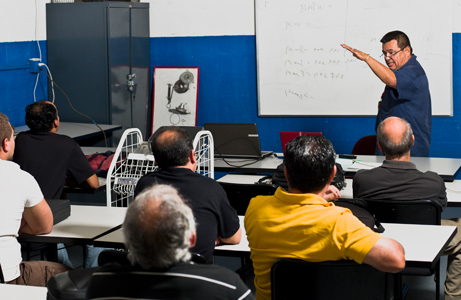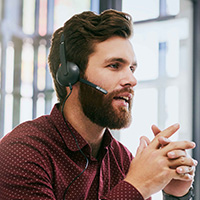Coaching Drivers with Vehicle Telematics

What is telematics?
From data recorders to global positioning systems (GPS), to black boxes and camera systems, technology capable of gathering information on vehicles and drivers continues to grow every year. As these devices become telematics devices, capable of transmitting data from the vehicle to a fleet manager, the possibilities for using these devices expands even further. The use of vehicle telematics is the next step in improving the safe operation of motor vehicle fleets, transforming drivers from “lone workers” to employees whose performance can be observed, coached and managed. By using this technology and the wealth of information it can provide, fleet and risk managers can have data that aids in developing specific training programs that can positively modify driving behavior.

For years fleet managers have had access to satellite tracking of vehicles for routing and logistics purposes. Data flowing out of these devices, while not always to the sophistication of systems built specifically for coaching drivers, has been used to collect valuable information about vehicle speed and lanes of travel that can be used to coach drivers. As these systems have advanced, telematics systems designed specifically around driver coaching have become available. These devices can be used as a behavioral safety solution that uses technology, not simply a technology solution.
How do telematics devices work?
Vehicle telematics devices can use a combination of several technologies. Most devices will use a Global Positioning System (GPS), a satellite-based system of providing the user with the exact location and distance traveled, to track a vehicle’s location and speed. Through a GPS, a device can determine the speed of a vehicle (with some systems comparing against local speed limits) or determine when a vehicle leaves a specific geographic area (also called geo-fencing). More advanced systems use a device called an accelerometer, which measures vehicle acceleration. These usually consist of two components — one for accelerating and braking, and the other for lateral motion. Devices with accelerometers can detect hard brakes and hard turns, provide collision alerts, and assist with accident reconstruction.
What do telematics devices do?
Some of the common features of devices include:
- Driver scorecards: as information flows from a vehicle to a manager through the telematics device, many programs allow fleet managers to see a “scorecard” of their fleet. Varying from system to system, these scorecards can show performance against benchmarks for driver performance, at the fleet, sub-fleet or driver level. These can be useful in setting performance goals for a fleet or for coaching individual drivers by raising awareness about their driving behaviors. Driver scorecards are included in many of the newer telematics systems.
- In-cab coaching programs: a new generation of devices is emerging that not only tracks driver behavior, but also provides coaching in-cab as well. By establishing parameters for driver behavior (such as maximum acceptable speeds) some devices are able to send alerts or warnings to drivers that they are about to exceed these parameters. The warnings typically involve an audio or visual indicator (e.g. buzzers, lights, etc.).
- Camera-based systems: some of the most sophisticated telematics systems currently available are camera systems. The systems are comprised of a group of cameras set in the vehicle, facing the forward roadway, and often facing the driver. The system maintains a continual recording of video from the cameras, but only transmit that video during an unsafe driving event, typically something triggered by an accelerometer. A video clip, typically 5 to 15 seconds long, is then sent from the device to a manager who can use the video to provide coaching to the driver.
Driver coaching with telematics
This technology can provide fleet managers with valuable information on the driving habits of their employees and, if used properly, could help bridge the application gap often faced with more traditional methods of observation and feedback techniques for fleets. If used poorly, however, it could easily create huge morale issues and fulfill the dreaded specter of “Big Brother” monitoring. The challenge is to use this technology in a way that rewards desired driving behaviors while resisting the temptation to over-monitor.
Avoiding big brother
Some devices are unobtrusive while some interact regularly with drivers. No matter the device, telematics can raise the fear of a “Big Brother” constantly watching the driver. Communication with drivers about the device is the key to a successful program:
- Clearly explain the limits and use of data from the device
- Seek input from labor relations and safety committees
- Set an understanding in management that the telematics device is a coaching device, not a tool for delivering punishment
- Inform drivers of the best practices and set clear expectations
Setting benchmarks
Before using telematics data to coach drivers, internal benchmarks need to be established. Drivers should be held to a standard that is understood, accepted and achievable. A process to develop these benchmarks should include:
- Understanding the data available from telematics devices
- Defining unsafe driving behaviors (such as speeds or hard brakes)
- Understanding the frequency of unsafe driving activities
- Establishing an organizational tolerance for driving behavior
Assign roles and responsibilities
Effective telematics coaching programs cannot function without the involvement of a manager or supervisor. Even devices that provide in-cab coaching lose their effectiveness if their lessons are not reinforced by management. Drivers of instrumented vehicles should be monitored by a manager or supervisor who has:
- An understanding of the organization’s operations, routes and vehicles
- Access to technology infrastructure and ability to see driver level data
- Sufficient one-on-one communications with the driver to allow for regular 5- to 10-minute coaching sessions
Coach through positive reinforcement
Once driver communication has happened, benchmarks are established and roles are assigned, it is time to coach your drivers. A good coaching program consistently reinforces good driving habits and should:
- Establish a clear schedule for driver coaching sessions
- Use positive reinforcement to encourage trends toward safe driving
- Encourage open discussion regarding barriers preventing the driver from achieving safety goals
- Hold supervisors accountable for coaching and reviewing data
- Convey a message that there are inherent risks in driving; no one is 100 percent safe
Doc#: LCT776




